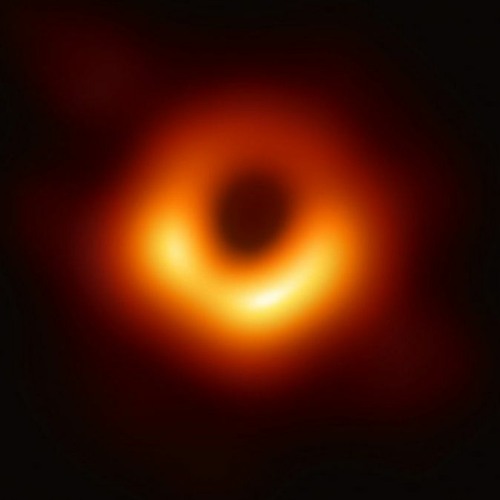
Various teams around the world refined their techniques, and retrofitted some major observatories so that they could add them to a network.
Foto buco nero how to#
How to hunt for a black hole with a telescope the size of Earth Effectively, the telescopes work as if they were shards of one big dish. It involves multiple telescopes, located far apart from one another and pointed at the same object simultaneously. Fortunately, a technique called interferometry could help. To actually resolve details on the scale of the event horizon, radio astronomers calculated that they would need a telescope the size of Earth (a telescope’s resolution is also proportional to its size). This is because within a certain distance of the event horizon, most light rays bend so much that they effectively orbit the black hole. Moreover, Bardeen showed that the black hole would cast an even larger ‘shadow’. The effect, discovered by physicist James Bardeen at the University of Washington in Seattle in 1973, is similar to the way that a spoon looks larger when dipped in a glass of water.

Because light can cross the surface only one way - inwards - the globe should look completely black (see ‘Power of the dark’).Ī black hole’s event horizon should appear five times larger than it is, because the hole warps the surrounding space and bends the paths of light. To a nearby observer, an event horizon should appear as a spherical surface shrouding its interiors from view. NIK SPENCER/ Nature Avery Broderick/University of Waterloo (IMAGES bottom)Įvent horizons are the defining feature of black holes. That makes the data more complicated to interpret, but also potentially richer in information. Because Sagittarius A* is nearly 1,000 times smaller than the M87 black hole, matter orbited it many times during each observing session, producing a rapidly changing signal rather than a steady one, says Luciano Rezzolla, a theoretical astrophysicist at the Goethe University Frankfurt in Germany and a member of the EHT team. The teams will also now turn their attention to the Sagittarius A* data. Further studies could also help researchers understand how the black hole produces its gigantic jets. But it indicates the direction in which it’s spinning, which is clockwise in the sky, she said. “We focused all our attention on M87 when we saw our first results because we saw this is going to be awesome,” says Falcke.Īt the Brussels press conference, astrophysicist and collaboration member Monika Moscibrodzka, also at Radboud, said that the measurements so far are not precise enough to measure how fast the M87 hole spins - a crucial feature for a black hole. They quickly realized that they could get a first, clean picture from M87. The data set is likely to be the largest ever collected by a science experiment, and it took two years of work to produce the pictures.Īfter combining the observatories’ data, the team started analysis in mid-2018. They mustered enough resolution to capture the distant objects by linking up eight radio observatories across the globe - from Hawaii to the South Pole - and each collected more data than the Large Hadron Collider does in a year (see ‘Global effort’). The team observed two supermassive black holes - M87’s and Sagittarius A*, the void at the Milky Way’s centre - over five nights in April 2017. How scientists reacted to the first-ever image of a black hole The images provide “clear evidence” of a ‘photon ring’ around a black hole, she says. “I was so delighted,” says Andrea Ghez, an astronomer at the University of California, Los Angeles. “It is yet another confirmation of general relativity as the correct theory of strong gravity.” “When I was a student, I never dreamt that anything like this would be possible,” he says. The image is a “tremendous accomplishment”, says astrophysicist Roger Blandford at Stanford University in California, who was not involved with the work. The findings were also published in a suite of papers 1, 2, 3, 4, 5 in Astrophysical Journal Letters on 10 April. The highly anticipated results, comparable to recognizing a doughnut on the Moon’s surface, were unveiled today by the Event Horizon Telescope (EHT) collaboration in seven simultaneous press conferences on four continents.

They reveal, in greater detail than ever before, the event horizon - the surface beyond which gravity is so strong that nothing that crosses it, even light, can ever climb back out. The images - of a glowing, ring-like structure - show the supermassive black hole at the centre of the galaxy M87, which is around 16 megaparsecs (55 million light years) away and 6.5 billion times the mass of the Sun. The first image of a black hole: A three minute guide


 0 kommentar(er)
0 kommentar(er)
